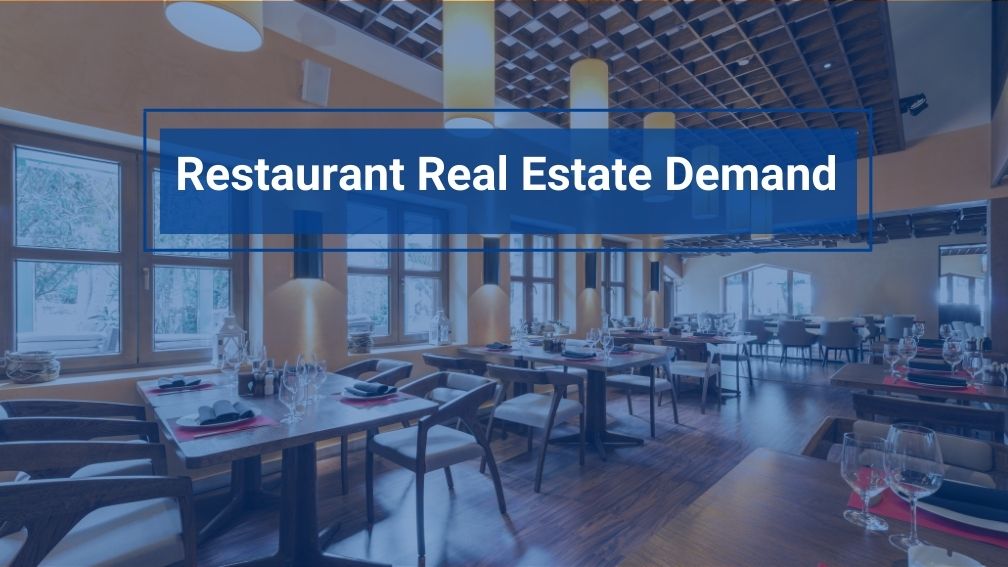Restaurant Real Estate Demand: Lease Expansion Strategies
Last Updated on March 29, 2024 by Morgan Beard
Restaurant real estate demand is off the charts, with supply struggling to keep up. Roughly 50% of retailers are looking to expand their brick & mortar real estate presence, according to Colliers.
As the restaurant industry continues to grow and evolve, savvy operators are always on the lookout for strategic real estate opportunities to expand their businesses. Understanding the demand drivers for restaurant real estate is crucial for making informed decisions about new locations and lease negotiations.
Understanding the Demand for Restaurant Real Estate
Before diving into lease expansion strategies, it is crucial to understand the demand for restaurant real estate. Restaurateurs have been nimble about meeting their consumers where they want to be met via drive-thru lanes, digital ordering kiosks, pick-up windows, mobile food trucks, pop-up shops — with people-friendly operations solutions.
Various market factors like increased retail spending among consumers, a cooling in interest rates and positive economic indicators have led to a growing demand for retail space across restaurant types, including Quick Service Restaurants, Fine Dining and an array of businesses in the hospitality sector. The restaurant industry is constantly evolving, and as such, there are specific factors that drive demand for commercial space. Some of these factors include:
Location, Location, Location
The old real estate adage rings true for restaurants – location is paramount. Desirable locations near high-traffic areas, residential neighborhoods, office parks, or tourist attractions can significantly impact a restaurant’s success. Visibility, accessibility, and foot traffic are key factors that influence site selection. Development of new shopping centers, urban centers, and mixed-used properties are playing catch-up post-pandemic, which poses an opportunity for restaurant growth.
Demographics & Target Audience
Successful restaurants cater to the tastes and preferences of their target demographic. Population density, income levels, and lifestyle trends in a particular area can determine whether a specific concept will resonate with potential customers. Thorough market research is essential to identify the ideal customer base and unlock your restaurant competitive advantage with that group.
Restaurant Competition
The competitive landscape plays a significant role in restaurant real estate demand. Operators must evaluate existing competition, both national chains and local eateries, to identify underserved markets or opportunities for differentiation. A saturated market may require a unique concept or positioning to attract customers.
Site Selection
Numerous factors contribute to successful site selection for a restaurant, including zoning regulations, parking availability, building infrastructure, and lease terms. Operators must carefully weigh these considerations to find the perfect location that aligns with their brand, concept, and long-term growth plans.
Lease Expansion Strategies for Restaurants
Lease expansion is a critical component of any successful growth plan, allowing restaurateurs to capitalize on emerging market opportunities, reach new customer bases, and drive increased revenue streams. However, navigating the complexities of real estate acquisition, lease negotiations, and portfolio management requires careful planning and execution.
By employing strategic lease expansion approaches, such as the hub and spoke model, strategic market entry, or brand portfolio diversification, restaurant operators can effectively scale their businesses while mitigating risks and maximizing returns on their investments. This section explores proven lease expansion strategies that enable restaurateurs to unlock new growth avenues and solidify their competitive positioning in the dynamic and ever-evolving culinary landscape.
Hub & Spoke Expansion Strategy
This approach involves establishing a central hub location and then expanding outward with smaller, satellite locations or “spokes.” This strategy allows restaurant operators to leverage the success of a flagship location and gradually increase their footprint in a controlled manner. The spoke locations can offer a limited menu or focus on specific aspects of the business, such as takeout or delivery.
Strategic Market Real Estate Expansion
Successful restaurant brands often employ a strategic market expansion approach, carefully selecting new markets based on demographic data, competition analysis, and growth potential. This strategy involves a methodical process of identifying promising markets, securing prime real estate locations, and rolling out new units in a measured, risk-controlled manner.
Restaurant Brand Portfolio Diversification Strategy
Some operators choose to diversify their brand portfolio by developing and acquiring new restaurant concepts under different brand names. This strategy allows them to cater to diverse customer preferences, mitigate risk, and leverage their operational expertise across multiple concepts. It also provides opportunities to secure different types of real estate locations suitable for each brand.
Lease Management for Restaurant Operators
Effective lease management software is crucial for restaurant operators to control costs, maintain flexibility, and support growth strategies. Working with experienced commercial real estate advisors can provide valuable insights and negotiation leverage throughout the lease process.
These professionals can help operators navigate the complexities of site selection, lease negotiations, and portfolio management, ensuring that real estate decisions align with the overall business objectives. With their deep market knowledge and industry expertise, they can identify opportunities, mitigate risks, and optimize real estate strategies for long-term success.
As your portfolio scales, lease management software becomes an indispensable tool for managing your lease portfolio and maintaining your tenant rights and obligations. By understanding the demand drivers for restaurant real estate and implementing strategic lease expansion plans, operators can position their businesses for sustainable growth and profitability in an increasingly competitive industry.
